History of the Presidency
The success of South Dakota Mines is the legacy of many committed and visionary individuals who have led the university throughout its history. Meet our university presidents . . .
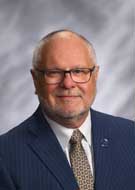
James (Jim) Rankin
Term of office: 2018-
Education: South Dakota School of Mines (B.S.), Iowa State University (M.S. & Ph.D.)
James (Jim) Rankin returned to his alma mater as the 19th president of South Dakota School of Mines & Technology in January of 2018. Meet President Rankin
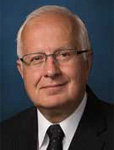
Jan A Puszynski
Term of office: Interim President, 2017-2018
Education: M.S., Technical University, Wroclaw, Poland; Ph.D., Institute of Chemical Technology, Prague, Czechoslovakia
Dr. Puszynski, VP of Research, served as Interim President in 2017 and has been educating undergraduate and graduate students at SD Mines for nearly 26 years, joining the faculty in 1991 as a professor of chemical engineering. During his tenure in Rapid
City, he has established a national and international reputation in materials research and received several multi-million-dollar research awards.
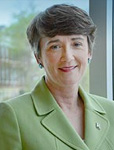
Heather Ann Wilson
Term of office: 2013-2017
Education: United States Air Force Academy (B.S. 1982), Oxford University (M.S. and D.Phil. 1985)
President Wilson championed the development of the Student Success Center, the Math@Mines program, the student business plan competition and entrepreneurs in residence, and the Freshmen Day of Service. She oversaw expansion of academic programs with the
addition of a PhD in civil engineering, an Energy Resources Initiative involving both teaching and research, the undergraduate honors program, the pre-health professions pathway, as well as the addition of numerous minors. She was instrumental in
securing funds and guiding improvements to campus facilities, including the Stephen D. Newlin Wellness and Recreation Center, O'Harra Stadium renovations, construction of Placer residence hall, and renovations of the chemistry and biological sciences
and McLaury buildings. She successfully led the effort for Mines to join the NCAA Division II Rocky Mountain Athletic Conference. She was also a passionate advocate for the university and its students and more closely connected the university to the
community.
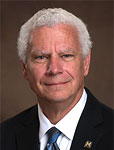
Duane Charles Hrncir
Term of office: Acting President, 2012-2013
Education: University of Alabama (B.S. 1974), University of Massachusetts (M.S. 1976), Texas A&M (Ph.D. 1979)
Dr. Hrncir came to SD Mines in 2005 as the first Dean of the College of Science and Letters. In 2009 Hrncir was appointed to serve as Vice President of Academic Affairs and Provost of the university. During his time as Acting President, the Nexus SmartPay
pilot program was initiated at SD Mines and the Physical Training Building was repurposed as the campus Music Center.
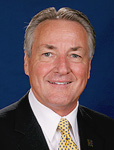
Robert Andrew Wharton
Term of office: 2008-2012, died in office
Education: Humbolt State University (B.A. 1976, M.A. 1978), Virginia Polytechnic Institute (Ph.D. 1982)
A scientist and an educator, Dr. Wharton initiated the Mines Medal and developed a comprehensive Campus Master Plan. During his tenure the James E. Martin Paleontological Research Lab, the Downtown Campus, and the Chemical/Biological Engineering/Chemistry
Building opened their doors.
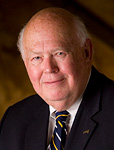
Charles Pierce Ruch
Term of office: 2003-2008
Education: College of Wooster (B.A. 1959), Northwestern University (M.A. 1960 and Ph.D. 1966)
A life-long educator, Dr. Ruch guided SD Mines for 5 years. During his administration Peterson Hall, the Black Hills Business Development Center, March/Dake Plaza, Computational Mechanics Lab, Tech Development Lab and Student Wellness Center were opened.
The Women in Science and Engineering program (WISE) and the tablet program began during Ruch’s term.
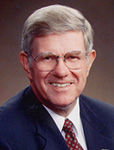
Richard Joseph Gowen
Term of office: 1987-2003
Education: Rutgers University (B.S. 1957); Iowa State University (M.S. 1960 and Ph.D. 1962)
Gowen came to the School of Mines campus in 1977 as Vice-President and Dean of Engineering, a position he held until 1984 when he assumed the presidency of Dakota State College. In January 1987 he returned to Rapid City as President of the School of Mines.
While Gowen was president the Classroom Building and the Arch were constructed. The SD Mines Concrete team won a national title; EPSCoR began funding a multitude of research on campus; the SKILL program and summer camps were established as were CAMP and
AMP. The Children’s Science Center and Little Miners’ Clubhouse opened their doors and the internet arrived on campus. Gowen led the drive to develop an underground laboratory at the site of the former Homestake Gold Mine.
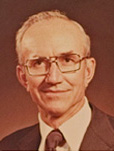
Richard August Schleusener
Term of office: 1976-1986; Acting President 1975-1976
Education: University of Nebraska, Lincoln (B.S. 1949), Kansas State University (M.S. 1956), Colorado State University (Ph.D. 1958)
Schleusener came to the SD Mines campus to assume the directorship of the newly established Institute of Atmospheric Sciences in 1964. He served in that capacity until 1974 when he was named Vice President and Dean of Engineering. In 1975 Schleusener
became Acting President and in March 1976 was named the institution’s 14th president.
During Schleusener’s administration the King Center opened and TOTH (The Tower on The Hill) was constructed. Schleusener led the campus in the celebration of its Centennial. During his tenure the Guy March Medal was established, an employee recognition
program began and the Community Advisory Council was formed. While Schleusener was in office, competitive women’s athletics began and the Tech Rockerettes basketball team won its first conference championship; the football team won three consecutive
conference championships and the Concrete Canoe team brought home six consecutive regional titles. During this time SD Mines partnered with the city of Rapid City to establish a permanent memorial honoring those who lost their lives in the disastrous
flood of 1972. The Endowment Fund was expanded and re-established as the SDSM&T Foundation and enrollment increased from 1500 students to nearly 3000 during Schleusener’s tenure.
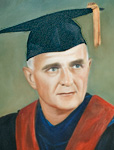
Harvey Reed Fraser
Term of office: 1966-1975
Education: United States Military Academy (B.S. 1939), California Institute of Technology(M.S.), University of Illinois (Ph.D. 1956)
Fraser came to campus as the first Dean of Engineering. He served in that capacity from 1965 until 1966 when he was appointed to the presidency.
Palmerton Hall, Devereaux Library; Electrical Engineering/Physics Building, and Physical Plant building opened while Fraser was in office and one floor of Dake Hall was converted to serve as the campus’ first women’s housing. Fraser was the first president
to have a formal inauguration ceremony. Under Fraser’s guidance computerized registration was implemented; the tradition of honoring 50 year graduates during commencement exercises began; a T-28 armored plane was acquired for advanced meteorological
research; and the Black Hills Natural Science Field Station was established. Fraser led the university’s flood recovery efforts following the disastrous June 1972 flood.
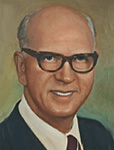
Fay Lilford Partlo
Term of office: 1954-1966
Education: Michigan College of Mining and Technology (E.M. 1923, B.S. 1926), University Wisconsin (Ph.M. 1930)
A lifelong educator, Partlo assumed the SD Mines presidency in 1954. During his tenure, the Chemistry/Chemical Engineering Building, March/Dake Hall, the Forest Service Experiment Station, Surbeck Center and the Mineral Industries Building were opened.
The Partlo presidency saw the first M-Day queen crowned, the first funded research and the first computer system. During Partlo’s years in office, enrollment topped 1000 for the first time.
Following his retirement from the presidency, Partlo remained on campus until 1971 as a professor of physics.
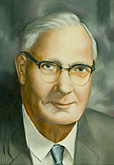
Earl Daniel Dake
Term of office: Acting President 1953-1954 and 1947-1948
Education: South Dakota School of Mines (B.S. 1924), Iowa State University (M.S. 1927)
Dake was the only person to have served twice in the capacity of Acting President, assuming the responsibility following the death of Joseph Connolly and then again when Warren Wilson resigned. Dake was the only native South Dakotan and the only graduate
of SD Mines to occupy the president’s office.
Following his graduation in May 1924, Dake began his career on the School of Mines campus, leaving only briefly to complete is M.S. In addition to his roles as professor, department chair, and vice president, Dake helped design the Civil/Mechanical Building.
During his second administration, Connolly Hall welcomed its first residents. In 1959, a wing of March/Dake Hall was named for him in recognition of his outstanding service to SDSM&T. When Dake retired in 1972, he had served the School of Mines for
48 years.
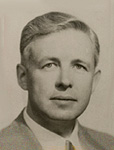
Warren Elvin Wilson
Term of office: 1948-1953
Education: Lehigh University (B.S. 1928), Cornell University (M.C.E. 1932), California Institute of Technology (M.S., 1939); University of Iowa (Ph.D. 1941)
Warren Wilson first came to campus in 1935 as a professor of civil engineering; he served in that capacity until 1938. A decade later he returned to SD Mines as its president. During his tenure, the Civil/Mechanical Building opened its doors and the yearbook
(“The Engineer”) began. Wilson started the tradition of an annual honors day and created a separate office for graduate education.
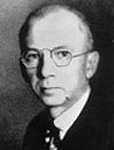
Joseph Peter Connolly
Term of office: 1935-1947, died in office; Acting President 1935
Education: Oberlin College (A.B. 1912); University of Missouri (M.A. 1915), Harvard University (M.A. 1916, Ph.D. 1927)
Connolly arrived on campus in 1919 to teach mineralogy and petrography. He led the university during the illness and subsequent death of President O’Harra. Following O’Harra’s death in 1935, Connolly was appointed acting president before being named president
in September 1935.
During Connolly’s administration the first master’s degree program began, the name of the institution was changed from South Dakota School of Mines to South Dakota School of Mines and Technology and a school seal was created. Connolly was an integral
part of the National Geographic Society’s famous Badlands Expedition. He led the campus through World War II when an Army training unit was established on campus. O’Harra Stadium was completed, the O’Harra Building and the Bureau of Mines Building
were constructed and the Maintenance Building and Campus Place for married students were opened while Connolly was president. During his tenure enrollment doubled to more than 600 students.
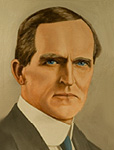
Cleophas Cisney O'Harra
Term of office: 1911-1935, died in office
Education: Carthage College (B.A. 1891), Johns Hopkins University (Ph.D. 1896)
O'Harra arrived on campus in 1898 to teach geology and mineralogy, he served as vice president of the institution before being appointed president in 1911.
O'Harra was responsible for the construction of the “M” on Cowboy Hill, he oversaw the first M-Day, the introduction of freshman beanies, and the formation of the M Club. During World War I O’Harra welcomed an Army training detachment. The McLaury and
Physical Training buildings were completed as well as an Army barracks and mess hall during his tenure; he began construction of the football stadium, dismissing classes for a day so that students and faculty could assist. The football team received
a name, “Hardrock Men”, and the campus made its first radio broadcast from its own station (the first in the state); preparatory courses ended, and the Alumni Association formed during O’Harra’s presidency.
O’Harra assisted with the arrangements for National Geographic’s historic stratosphere flight, helped determine the location of Mt. Rushmore; and welcomed two U.S. presidents to the campus. During O’Harra’s presidency campus enrollment increased from
around 60 students to nearly 400.
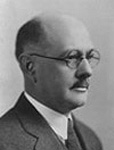
Charles Herman Fulton
Term of office: 1906-1911
Education: Columbia University School of Mines (M.E. 1897); South Dakota State College (Sc.D. 1911)
Fulton spent 6 years as a professor of mining engineering and metallurgy at the School of Mines prior to being appointed president in 1906. During the time he led the institution, the first “Book of Views” was published and the college won its first baseball
championship. Fulton was responsible for hiring the School of Mines’ first athletic director.
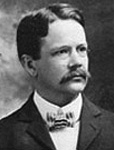
Robert Lincoln Slagle
Term of office: 1898-1906
Education: Lafayette College (B.A. 1887, M.A. 1890); Johns Hopkins (Ph.D. 1894)
Slagle taught chemistry at the School of Mines for one semester prior to being named president. Slagle added enrichment classes such as English, Latin and history to the school’s curriculum. The Main Building was constructed during his term and he established
the Mining Experiment Station. Slagle organized the institution’s first formal expedition into the Badlands and discovered “School of Mines Canyon”. During his term, the first housing for student was secured.
After leaving the School of Mines, Slagle served as president of two other South Dakota institutions, South Dakota State College in Brookings and University of South Dakota in Vermillion.
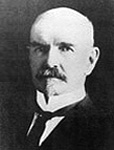
Valentine Trant McGillycuddy
Term of office: 1894-1897
Education: Detroit College of Medicine (M.D. 1869)
As president of the institution’s Board of Trustees, Valentine McGillycuddy resigned from the Board to assume the leadership of the campus during a difficult time in the school’s history. During his time on campus, McGillycuddy not only was the leader
of the school, he taught geology and in 1896 was elected mayor of Rapid City. McGillycuddy had a storied past, having been a member of the Newton-Jenney Black Hills expedition of 1875, an Indian Agent on the Pine Ridge Reservation, an explorer, and
the first non-native to summit Black Elk Peak (formerly Harney Peak). During his time on campus, the first football team was formed and a campus improvement project was initiated that included planting of shade trees and lawns. McGillycuddy was the
first leader to officially be called “president.” Read more here.
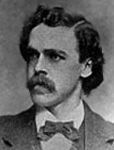
Walter Proctor Jenney
Term of office: 1893
Education: Columbia University (E.M. 1871, Ph.D. 1877)
An esteemed government geologist, Jenney was one of the leaders of the Newton-Jenney Black Hills Expedition of 1875. Jenney holds the distinction of having the shortest term of office, serving just four months. During his brief time on campus, Jenney
began the institution’s first formal newspaper advertisements, promoting both the educational opportunities of the school and the assaying services provided to the region.
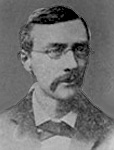
William Parker Headden
Term of office: 1891-1893
Education: Dickinson (A.B. 1872, A.M. 1875), University of Giessen (Ph.D. 1874)
Headden first arrived on the School of Mines campus in 1888 as a professor of chemistry. He was terminated in 1890, but was rehired in 1891 assuming the leadership role. During Headden’s tenure, Prep School courses were formalized and the campus began
night classes for local residents, offering courses in bookkeeping. Headden opened the campus to the public, inviting them to attend lectures on chemistry and assaying and appointed the institution’s first Professor Emeritus.
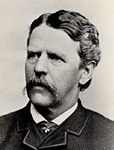
Samuel Cushman
Term of office: 1890-1891
Education: Brown University, Bridgewater State Normal School (1849)
A newspaper editor and businessman, Cushman came into office during a turbulent time in the history of the school. Cushman was a "commuting dean" living in Deadwood, catching the Monday morning train into Rapid City and returning to Deadwood on the Friday
evening train. During his administration he kept the institution open and moving forward despite very challenging political times. When a new Dean was hired, Cushman returned to his business interests selling insurance and blasting powder.
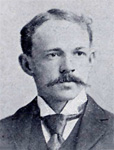
George Francis Duck
Term of office: 1889-1890
Education: Lehigh University (E.M. 1883)
George Duck was the youngest person to lead the School of Mines, having been appointed Dean at 25 years of age. Duck served during a very difficult time period as the region transitioned from a territory into a state. Duck, along with the entire faculty
and staff, was dismissed at the end of the academic year in 1890. During his year in office, Duck established a classical course of study and officiated at the first commencement ceremony that honored multiple graduates.
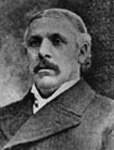
Franklin Reuben Carpenter
Term of office: 1886-1889
Education: Rector’s College, (B.A. 1868; M.A. 1887) Ohio University (Ph.D. 1888)
Franklin Carpenter was the first Dean of the Dakota School of Mines. After being appointed to the position, he traveled to the Eastern states to select and acquire furnishings, equipment and supplies for the new school. He oversaw the opening of the school,
presided over the first commencement and saw the addition of a second building. Carpenter established the Museum of Geology and published the campus’ first scholarly work, “School of Mines Bulletin No. 1”. Carpenter remained associated with the school
after his tenure ended being named the first Faculty Emeritus. His School of Mines Bulletin, “Preliminary report of the Dakota School of Mines upon the geology, mineral resources, and mills of the Black Hills of Dakota,” remains a well-respected authority.